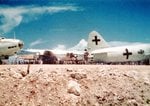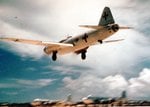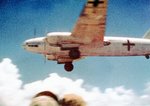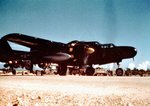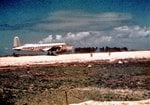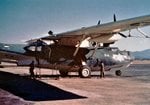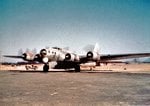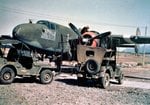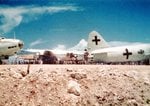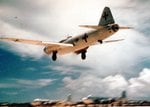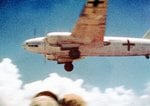Hey guys.
Many years ago when I painted the nose art on the Collings Foundation A-26C the first time (I'll post those another time)
,whilst the bird was down for an annual inspection,I meet
an A-20 pilot (sorry don't remember his name) who was part of the team. We got to talking of course and he told me had a few pictures of his time in the Pacific. He was gracious enough to make copies of these for me. He said these were taken at Ie Shima island in 1945. The G4M Bettys were carried some officers that where transferred to the C-54 that took off shortly later. Don't know why. The rest of the birds were various ones around the base. Never seen any of these before so I have no reason to doubt him. Anyone care to clarify on these?
In any event enjoy!
Many years ago when I painted the nose art on the Collings Foundation A-26C the first time (I'll post those another time)
,whilst the bird was down for an annual inspection,I meet
an A-20 pilot (sorry don't remember his name) who was part of the team. We got to talking of course and he told me had a few pictures of his time in the Pacific. He was gracious enough to make copies of these for me. He said these were taken at Ie Shima island in 1945. The G4M Bettys were carried some officers that where transferred to the C-54 that took off shortly later. Don't know why. The rest of the birds were various ones around the base. Never seen any of these before so I have no reason to doubt him. Anyone care to clarify on these?
In any event enjoy!
Attachments
Last edited:

